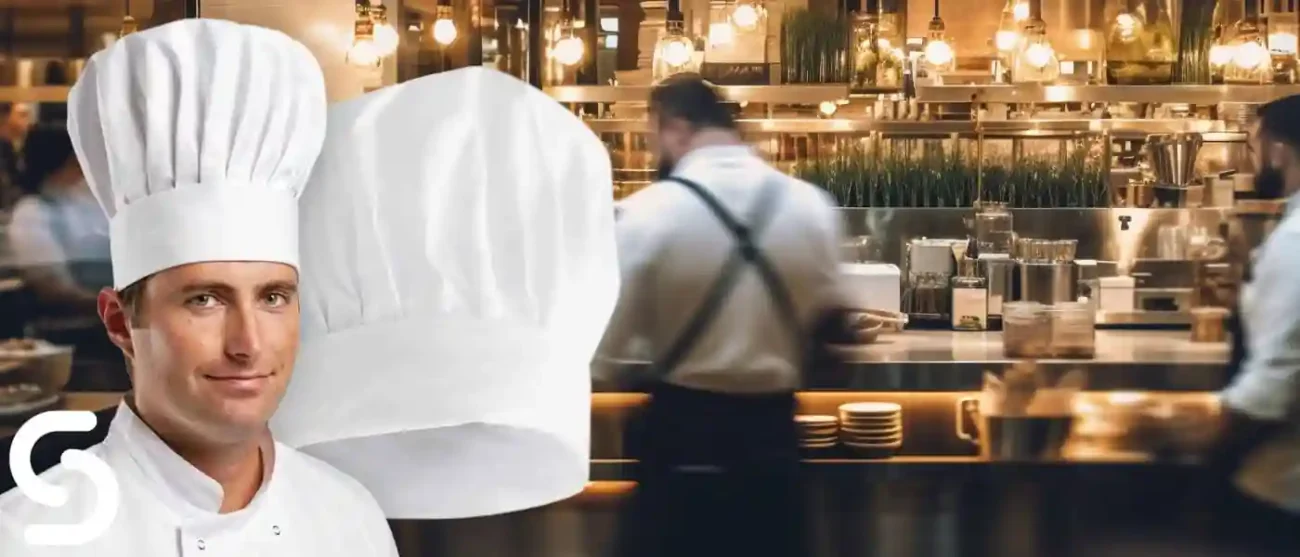Complete Safety Signs Checklist (England & Wales)
Ensuring your venue stays legally compliant. If your catering or hospitality venue is situated in England or Wales, your signage
Ensuring your venue stays legally compliant. If your catering or hospitality venue is situated in England or Wales, your signage
Available in a range of sizes, our brand new illuminated menu covers are all the rage. Our illuminated LED menu
Shop across our entire range of catering & hospitality products with up to 70% off until midnight Monday 1st December.
The leather menu cover can play a crucial role with customer’s first impressions. At Smart Hospitality Supplies, we have made
In the culinary arts, the chef uniform is more than just a set of clothes—it’s an emblem of mastery and dedication. This ensemble, known as chef’s whites, combines several unique elements, and the chef’s hat is instrumental in completing the aesthetic and serving functional needs. In this article, we delve into the importance of chef hats and the reasons they’re a non-negotiable part of any chef’s outfit.

The classic chef’s uniform is a visual feast, representing a storied culinary lineage passed down over the years. Here is a brief overlay of the traditional attire.
The toque blanche, the white chef’s hat, is arguably the most famous part of this uniform. It’s an integral component of a chef’s uniform, traces its roots back to 16th-century French culinary practices and has evolved into a universal emblem for chefs everywhere. More than a mere accessory, the toque symbolises a chef’s devotion to their art.
In bygone eras, the height of the toque indicated a chef’s position within the kitchen’s hierarchical structure. The tall shape of the chef hat signifies the rank or status of the chef wearing it.
Projecting professionalism: Generally, wearing a chef hat sets the tone for professionalism. A neat and spotless hat grants a sense of authority, signalling to both kitchen staff and patrons that the chef is knowledgeable and in command. Maintaining a professional appearance is imperative in a commercial kitchen’s chaotic, high-temperature conditions. When diners witness chefs in their clean attire, complete with the signature hat, it elevates their overall dining experience and fosters trust in the food served.
Prioritising food safety: Chef hats also fulfil a functional role, especially regarding food safety. Amid the hurly-burly of a professional kitchen, where hot oil, spills and splatters are commonplace, a hat safeguards the chef’s head. It also minimises the risk of stray/long hairs contaminating the food, thereby upholding hygiene standards and ensuring a pleasurable dining experience for guests.
Upholding tradition and style: Culinary traditions are deeply revered, and the chef’s hat is a living testament to this legacy. It links contemporary chefs to their ancestral roots and to those who have worn similar hats in years past. Besides its traditional significance, the chef hat adds a stylistic flair to the uniform. The ensemble of the white hat, jacket, and houndstooth pants creates a visually arresting, evergreen look that distinguishes chefs and leaves a lasting impression.
When picking the right hat, chefs are spoiled for choice. From the classic toque to modern skull caps and even disposable food service hats, there is a style for every preference and need. Factors like breathability and heat resistance are often considered to match the demands of a hot kitchen.
For instance, when safety takes centre stage, chefs may lean towards flame-resistant fabrics to protect against mishaps involving hot substances or flames. Non-slip features can also be essential to ensure the hat remains securely positioned, even during high-stress kitchen scenarios.
To sum up, a chef hat isn’t just a stylish accessory—it’s a badge of tradition and functionality in the culinary universe. It rounds off the chef’s attire, amplifying the aura of a culinary expert. Whether you’re a culinary veteran or an ambitious newcomer, topping off your uniform with a professionally tailored chef hat is the finishing touch to your culinary identity. So, whether you wear it to celebrate tradition, safeguard food, or establish a professional presence, a chef hat is an indispensable part of the professional kitchen toolkit.
Check out this blog if you want to look at hats with adjustable features.



A Company Registered in England & Wales Company Registration Number: GB05069286 VAT Registration Number: GB867112521 Smart Hospitality Supplies is a trading division of The Smart Marketing & Media Group Limited
